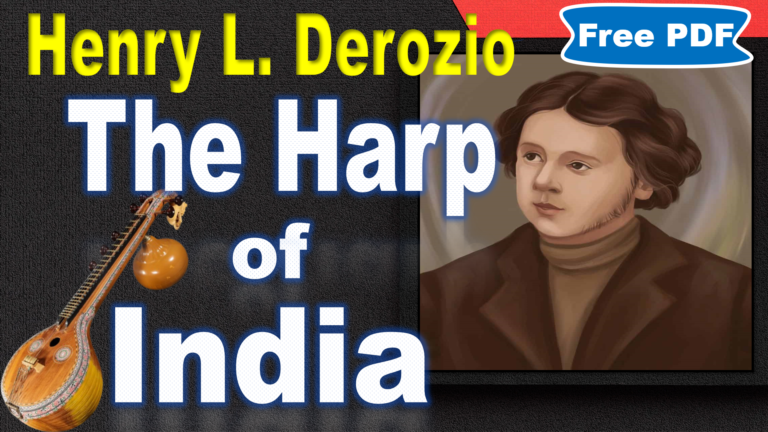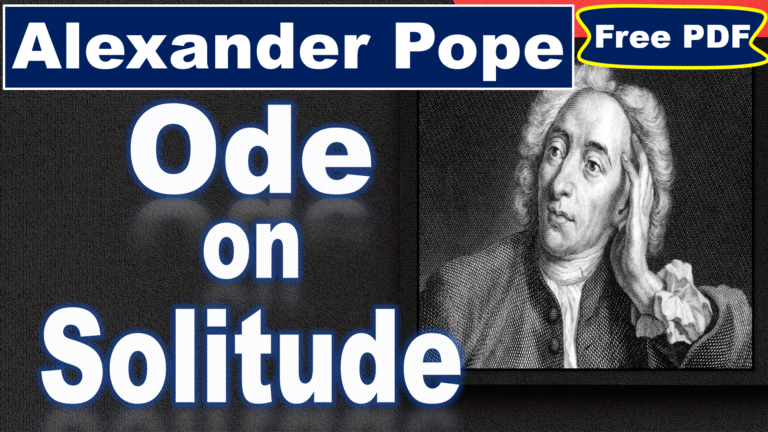On the Late Massacre in Piedmont Summary
John Milton’s sonnet “On the Late Massacre in Piedmont” was written in 1655 in response to the brutal massacre of the Waldensians, a Protestant group living in the Piedmont region of Italy. The massacre occurred in April 1655, when the Duke of Savoy’s Catholic forces launched a violent campaign against the Waldensians, killing many and destroying their communities. The poem was first published in 1673 in Milton’s collection Poems, &c. upon Several Occasions, which was a posthumous reissue of a previous collection of Milton’s earlier poetry.
The poem is both a lament for the victims and a call for divine justice. Milton begins by asking God to avenge the “slaughter’d saints” whose bones are scattered across the cold Alpine mountains. He portrays the Waldensians as faithful Christians who preserved God’s truth since ancient times, unlike the pagan worshippers of “stocks and stones” (idols), alluding to Catholicism, which Milton criticizes.
The poet urges God not to forget the suffering of these “sheep” in their “ancient fold” who were brutally murdered by the Catholic forces, symbolized by the “bloody Piemontese.” He uses graphic imagery to emphasize the atrocity, mentioning how mothers and infants were thrown down the rocks, their cries echoing through the valleys and reaching heaven.
In the final six lines, Milton shifts from lamentation to hope. He believes that the martyrdom of the Waldensians will not be in vain. Their “martyr’d blood and ashes” will act as seeds, spreading their faith across Italy, where the “triple tyrant” (the Pope) still holds power. Milton envisions that from these sacrifices will arise a new generation of Protestants, growing “a hundred-fold,” who will remain true to the faith and avoid the “Babylonian woe,” a biblical reference to the corrupt influence of the Catholic Church.
In this tightly structured sonnet, Milton combines his personal grief with his belief in divine retribution, framing the massacre as both a tragic loss and an opportunity for spiritual renewal and the ultimate triumph of Protestantism over tyranny.
Historical Context
John Milton’s sonnet “On the Late Massacre in Piedmont” was written in 1655, after a tragic and violent event where a group of Protestants, known as the Waldensians, were brutally attacked by Catholic soldiers. The poem reflects Milton’s anger and sadness over this event, as well as his strong religious beliefs. To fully understand the poem, it’s important to know the history behind it.
Who Were the Waldensians?
The Waldensians were one of the oldest Protestant groups in Europe, dating back to the 12th century. They followed a simple form of Christianity that focused on the Bible, rejecting many of the beliefs and practices of the Catholic Church. Because of this, they were often seen as heretics by the Catholic Church and faced persecution for hundreds of years.
By the 1600s, the Waldensians had adopted Protestant beliefs similar to those of John Calvin, and they lived mostly in the mountainous area of Piedmont, Italy. Although they wanted to peacefully practice their religion, they were still seen as a threat by the Catholic authorities.
The 1655 Massacre
In 1655, the Duke of Savoy, who ruled the Piedmont region, ordered the Waldensians to either become Catholics or leave their homes. When they refused, Catholic soldiers attacked their villages. The soldiers killed many men, women, and children, often in extremely violent ways, including throwing people off cliffs. This event is known as the Piedmont Massacre or the Waldensian Massacre, and it shocked and angered Protestants across Europe.
Milton’s Reaction
John Milton was deeply moved by the massacre. At the time, Milton was working for the government of Oliver Cromwell in England, which was led by Protestants. Milton himself was a Puritan, a type of Protestant who believed in strict religious discipline and opposed the Catholic Church. He saw the massacre as part of a larger battle between true Christianity (which he believed was Protestantism) and the corrupt power of the Catholic Church.
Milton wrote the poem as a way of expressing his sorrow and anger over the massacre. He also wanted to call attention to the religious persecution happening in Europe and to ask God to bring justice for the victims.
Protestant Outrage and European Politics
The massacre caused outrage in Protestant countries, including England. Many Protestants saw it as an example of Catholic cruelty. Oliver Cromwell, the leader of England at the time, was so upset by the massacre that he offered help to the Waldensians, including money and political pressure on the Duke of Savoy to stop the violence.
Milton’s poem can be seen as part of this wider Protestant response. By writing about the massacre, Milton was not only expressing his personal grief but also contributing to the Protestant movement that sought to protect people from Catholic persecution.
Religious Conflicts of the Time
During the 1600s, Europe was divided by religious wars and conflicts between Protestants and Catholics. The most famous of these was the Thirty Years’ War (1618–1648), which ended just a few years before the Piedmont massacre. Although that war was over, tensions between Protestants and Catholics remained high in many parts of Europe.
In England, where Milton lived, the government was controlled by Puritans under Oliver Cromwell, and they were determined to protect Protestantism. The massacre of the Waldensians was seen by many English Protestants as part of the ongoing struggle between their faith and Catholicism. Milton’s poem reflects this larger conflict and shows his strong desire for justice for the Protestant victims.
Conclusion
John Milton’s sonnet “On the Late Massacre in Piedmont” was written in response to a real historical tragedy. The Waldensians, a group of Protestants, were brutally attacked by Catholic forces in 1655, and this deeply affected Milton. Through his poem, he mourns the deaths of the innocent victims and calls for God’s justice. The poem also reflects the religious struggles of Milton’s time, when Protestants and Catholics were often in conflict. Milton’s powerful response to this event highlights his belief in the fight for religious freedom and justice for those who suffered for their faith.
Key Points
Author:
John Milton (1608–1674) was an English poet and intellectual known for his strong Puritan beliefs and political engagement. Milton is widely regarded for his epic Paradise Lost, but he also wrote many shorter works, including this sonnet, which reflects his deep religious convictions and his criticism of the Catholic Church.
Form (Rhyme Scheme):
The poem is a Petrarchan sonnet, consisting of 14 lines.
Rhyme Scheme: The octave follows the rhyme pattern ABBAABBA, while the sestet follows CDCDCD. This is typical of Petrarchan (or Italian) sonnets, which are divided into an eight-line octave and a six-line sestet.
Octave: Milton uses the first eight lines to describe the massacre, the victims, and the extent of their suffering. The vivid images of bones scattered on cold mountains and the groans of the dying create a stark, mournful picture.
Sestet: The tone shifts slightly in the final six lines, where Milton looks forward with hope. He envisions the blood of the martyrs sowing seeds that will grow into a hundred-fold new believers, a sign that their faith will survive and flourish despite persecution.
Speaker:
The speaker is likely Milton himself, expressing his personal outrage at the massacre of the Waldensians. The speaker’s tone is passionate, sorrowful, and full of righteous anger, as he calls on God for vengeance and justice.
Setting:
The poem’s setting is the Alpine mountains of Piedmont, where the massacre of the Waldensians occurred in 1655. The speaker also alludes to the broader setting of Italy, dominated by the Catholic Church, symbolized by “Babylon.”
Theme:
Religious Persecution: The central theme is the massacre of Protestant Christians by Catholic forces, portraying the victims as martyrs who upheld the pure truth of Christianity.
Divine Justice and Vengeance: The poem reflects the speaker’s plea for God to avenge the massacre and to remember the suffering of the faithful.
Martyrdom and Renewal: The martyrdom of the Waldensians is portrayed as a source of future spiritual growth, with their blood and ashes “sowing” the seeds for future Protestant believers.
Anti-Catholicism: Milton’s strong opposition to the Catholic Church is evident, as he condemns it as corrupt and oppressive, symbolized by the “triple tyrant.”
Plot:
The poem begins with a direct plea to God to avenge the “slaughter’d saints” (the Waldensians) whose bodies lie scattered on the Alpine mountains.
The speaker describes the brutal massacre, with mothers and infants being thrown from cliffs by Catholic forces.
He then calls for God to remember the martyrs and let their blood and ashes sow new faith in the Italian fields.
The speaker expresses hope that from this suffering will emerge a new generation of faithful Christians who will reject the corruption of the Catholic Church (the “triple tyrant”) and escape its influence (“Babylonian woe”).
Tone:
The tone of the poem is sorrowful and outraged, as Milton mourns the brutal deaths of the Waldensians.
It is also defiant and hopeful, as Milton believes that their martyrdom will lead to spiritual renewal and growth, and that divine justice will ultimately prevail.
Style:
Milton’s style in this sonnet is elevated and formal, characteristic of his use of classical and biblical allusions.
Imagery is vivid and often violent, emphasizing the brutality of the massacre and the martyrdom of the faithful.
Allusions to biblical themes, such as “Babylonian woe,” invoke strong religious symbolism that underscores the poem’s spiritual and political themes.
Metaphor is used frequently, especially the metaphor of blood and ashes sowing new believers, representing the hope of spiritual regeneration.
Message:
Milton’s message is twofold: a plea for divine justice in the face of brutal religious persecution, and a hope for the future that the blood of martyrs will not be in vain, leading to the growth of true Christian faith.
He also strongly critiques the Catholic Church, symbolized as the oppressive “triple tyrant,” and expresses hope that people will turn away from its corrupt influence (“Babylon”) and embrace Protestantism.
John Milton Biography
John Milton was one of the most significant and influential poets of the English language, best known for his epic poem Paradise Lost, which is considered a cornerstone of English literature. His works reflect his deep engagement with religion, politics, philosophy, and literature, and his legacy extends beyond poetry to political writings and revolutionary ideas.
Early Life:
Birth and Education: Milton was born on December 9, 1608, in London. He was well-educated, attending St. Paul’s School before moving on to Christ’s College, Cambridge. Milton was an exceptional scholar, becoming proficient in several languages including Latin, Greek, Hebrew, Italian, and French.
Influence of the Renaissance: His education and his reading of classical and Renaissance literature influenced his style, which often reflects a blend of Christian themes with classical references.
Literary Career:
Early Works: Milton’s early poems include L’Allegro and Il Penseroso (1631), Comus (1634), and Lycidas (1637). These works demonstrate his ability to blend classical themes with Christian thought, as well as his lyrical mastery.
Political and Religious Writings: Milton was deeply involved in the political and religious turmoil of his time. He wrote numerous pamphlets on topics such as divorce (The Doctrine and Discipline of Divorce), freedom of the press (Areopagitica), and the English Civil War. As a Puritan, Milton supported the overthrow of the monarchy and Oliver Cromwell’s Commonwealth.
Political Involvement:
Civil War and Commonwealth: Milton served as Secretary for Foreign Tongues under Oliver Cromwell’s government. This position involved translating diplomatic correspondence and defending the Commonwealth through pamphlets. He was a committed republican and believed in the abolition of the monarchy.
Blindness: In the early 1650s, Milton began to lose his sight, eventually becoming completely blind by 1652. Despite this, he continued to write, dictating his works to assistants, including his daughters.
Paradise Lost and Later Works:
Paradise Lost (1667, revised in 1674): Milton’s most famous work is an epic poem written in blank verse that tells the biblical story of the Fall of Man, with Satan as a central character. The poem explores profound themes such as free will, obedience, justice, and redemption. It remains one of the greatest works of English literature.
Other Major Works:
Paradise Regained (1671): A sequel to Paradise Lost, focusing on Christ’s temptation in the wilderness.
Samson Agonistes (1671): A tragic closet drama based on the biblical story of Samson, which reflects themes of personal and spiritual struggle.
Religious and Political Views:
Puritanism: Milton was a Puritan, which significantly influenced his religious and political views. He advocated for the purification of the Church of England and was highly critical of Catholicism.
Anti-Monarchy: Milton was a staunch opponent of monarchy and believed in the rule of a republic. His political views, expressed in many of his writings, were aligned with the Puritanical vision of a godly government.
Later Life and Legacy:
After the Restoration of the monarchy in 1660, Milton’s political views put him at risk, but he was spared execution. He retired from public life and focused on his literary work, producing Paradise Lost and his other major works during this period.
Legacy: Milton’s works have had a lasting impact on English literature and culture. His exploration of complex theological and philosophical ideas, his innovative use of blank verse, and his advocacy for personal and political liberty have influenced generations of poets, writers, and thinkers.
Milton died on November 8, 1674, in London. His legacy as a writer, political thinker, and theologian remains enduring, influencing countless authors, poets, and thinkers across the centuries.
Word Meaning
| Tough Word | Meaning in English | Meaning in Hindi |
| Avenge | To seek revenge or punish for wrongdoing | प्रतिशोध लेना, बदला लेना |
| Thy | Your (archaic, used in poetic context) | तुम्हारा (पुराने या काव्यात्मक रूप में) |
| Slaughter’d | Killed violently, especially in large numbers | हत्या किया गया, विशेष रूप से बड़े पैमाने पर |
| Scatter’d | Spread or dispersed over a wide area | बिखरा हुआ |
| Alpine mountains | High mountains in the Alps | आल्प्स के ऊँचे पर्वत |
| Stocks | Descendants, family lineage | वंश, परिवार |
| Groans | Sounds expressing pain or suffering | कराह, पीड़ा या कष्ट की आवाजें |
| Ancient fold | An old or historical group, often referring to a religious or cultural community | प्राचीन समूह, प्राचीन समुदाय |
| Slain | Killed or murdered | मारा गया |
| Piemontese | Refers to people from Piedmont, a region in Italy | पीडमोंट क्षेत्र के लोग (इटली) |
| Moans | Low sounds of pain or sorrow | दर्द या दुख की धीमी आवाजें |
| The vales | Valleys | घाटियाँ |
| Martyr’d | Killed for one’s beliefs, especially religious | शहीद हुआ, विश्वासों के लिए मारा गया |
| Sow | To plant seeds for growth | बीज बोना |
| Doth | Does (archaic, poetic usage) | करता है (पुराने या काव्यात्मक रूप में) |
| Sway | Influence or control | नियंत्रण, प्रभाव |
| Tyrant | A cruel and oppressive ruler | अत्याचारी, क्रूर शासक |
| Hundred-fold | A hundred times as much | सौ गुना |
| Babylonian woe | Symbolic of great suffering or oppression, referring to biblical Babylon | महान दुख का प्रतीक |










